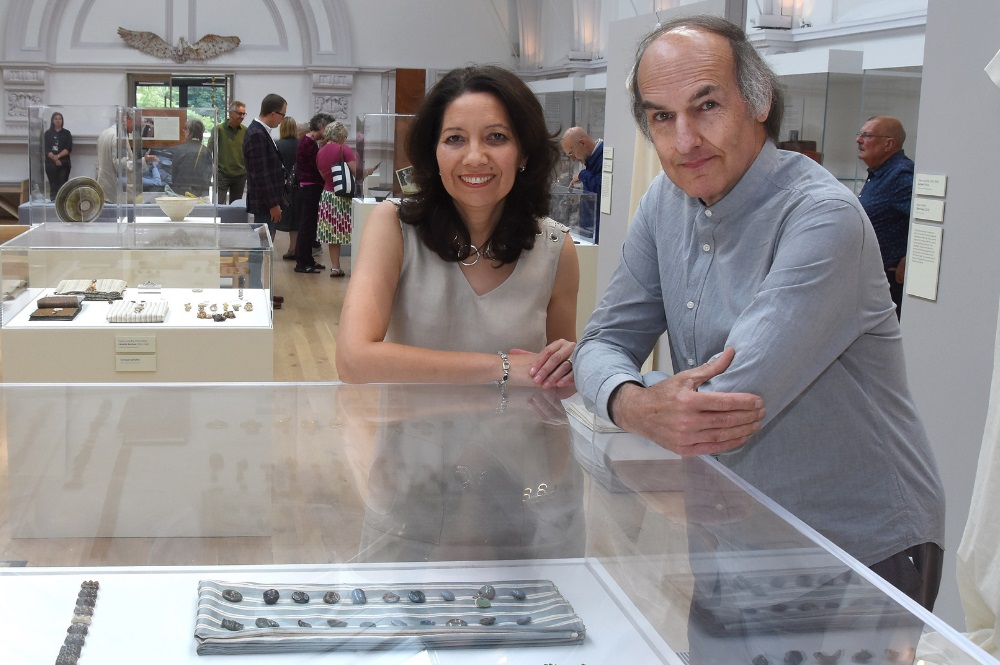Reyahn King has been chief executive officer for York Museums Trust since 2015.
Reyahn began her career as a curator of art with a specialism in British 18th century art. She has been a key figure in the UK art and cultural scene ever since.
As chair of the Cultural Leaders Group and has led the development of York’s Creative Future – part of York Culture Strategy.
With the roadmap out of lockdown laid out, York Museums Trust could finally announce reopening dates for their venues: York Castle Museum on 19 May, York Art Gallery on 28 May and Yorkshire Museum on 9 July.
How has the pandemic affected your venues?
The biggest impact is closure of our three museums: York Art Gallery, York Castle Museum and Yorkshire Museum. We are delighted that we sought and got permission from DCMS to keep Museum Gardens open. All our staff are so committed to sharing our wonderful cultural heritage in York and not being able to do this has been really disappointing.

In what ways have you adapted?
We quickly moved to make more of our collections accessible in fun ways online through things like #CuratorBattle which reached millions of people around the world. Our brilliant staff teams developed a completely different offer at York Castle Museum: small group guided tours based on specific themes like the history of the prison buildings. These allow us to welcome visitors whilst observing social distancing and have been popular. We’ll learn from this experience and look to add tours to our offer when we return to normal admissions.
What have been the most difficult and most uplifting experiences from the past 12 months?
The most difficult thing and the most uplifting thing are linked: our financial worries and the generosity of our supporters. We lost nearly £3m of income but the actions of staff and our stakeholders, in particular City of York Council, Arts Council England, and the government’s Culture Recovery Fund – as well as the generosity of local charities and individuals – have mitigated that impact. Public support, both in York and beyond, has been the most uplifting thing!
What have you learned from the pandemic? Will you do anything differently going forward?
We recognise how important culture has been in the crisis and want our local audiences to engage even more than in the past. Therefore we are trialling a new business model at York Art Gallery allowing free entry to the permanent collections and charging only for exhibitions. Similarly, when we reopen York Castle Museum and Yorkshire Museum we want to ensure local people are able to visit numerous times in affordable ways to see their favourite collections.

What’s next for York Museums Trust and its venues?
We have some exciting programmes coming up: Grayson Perry: Pre-Therapy Years at York Art Gallery, guided tours at York Castle Museum and the famous Richard III portrait coming to the Yorkshire Museum from the National Portrait Gallery. We can’t wait to share wonderful art and culture with the public again. We are also working more collaboratively to enable people to engage with heritage: a good example is our recent partnership with Herstory community history project where we are using our resources to support Herstory’s work.
How will York’s cultural scene have been changed by what’s happened?
There will be more emphasis on local engagement at a deep level encouraging and celebrating people’s own creativity as much as the consumption of artists’ work. At the same time we’ve learnt how to reach global audiences online and we must build on those international connections. Both of these are hugely exciting opportunities.
What have been your cultural highlights in York?
Oh so many to choose from with the amazing work of York Theatre Royal and Pilot Theatre always highlights in my calendar! If I have to choose, I’ll go for two digital projects:
1. York Ideas: the extension of York Festival of Ideas into a year round programme of global speakers online
2. York Mediale’s collaboration with artists Marshmallow Laser Feast, Kelly Richardson and Rachel Goodyear to create the fantastic Human Nature exhibition in York Art Gallery. It was so disappointing to have to close the exhibition early but The Tides within Us by Marshmallow Laser Feast will be shown again as part of Coventry City of Culture.

What do you think York’s cultural scene is missing – or what would you change?
I’d like to see more ambition and more diversity in York in general and in its cultural and heritage activities. Celebrating the local doesn’t have to mean never looking out and bringing in the new or the different. I’d like to see more interconnections made between York and beyond, out to wider Yorkshire and out to demographics and cultural activities beyond the city. I think the people of York would have an even richer cultural life as a result. We should look beyond the city for inspiration and engagement.
What are your hopes and fears for York’s cultural scene in the future?
Cultural organisations across York had started working together to deliver York’s Culture Strategy before the pandemic and we’ve continued to work closely to do so through Covid – jointly working with Reach and York Explore to provide activity packs for excluded children for example. I hope to see that spirit of joint working continue.
